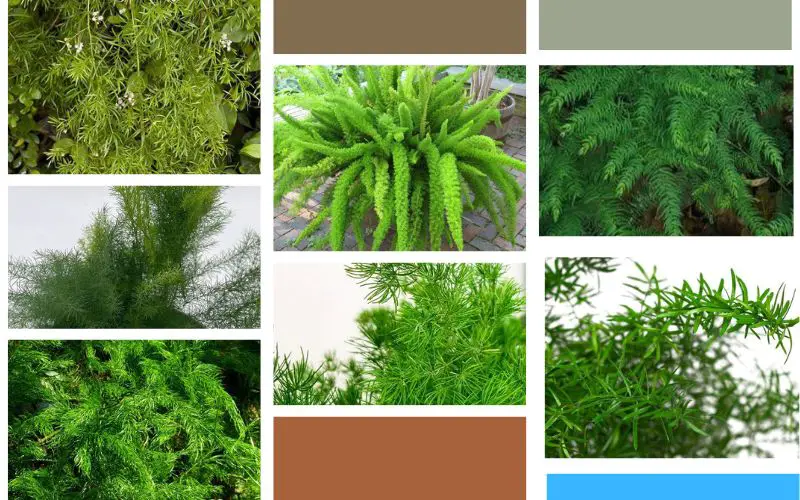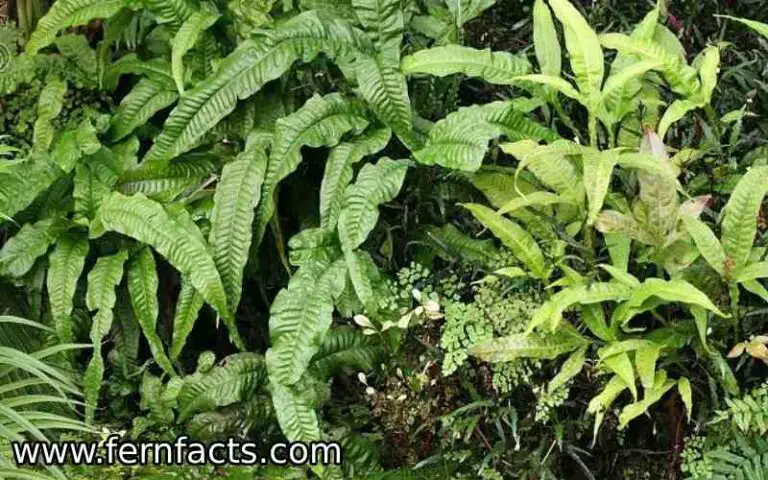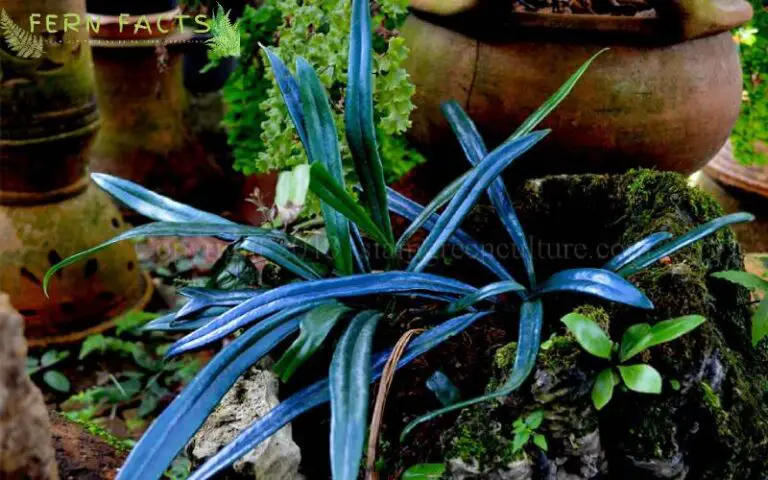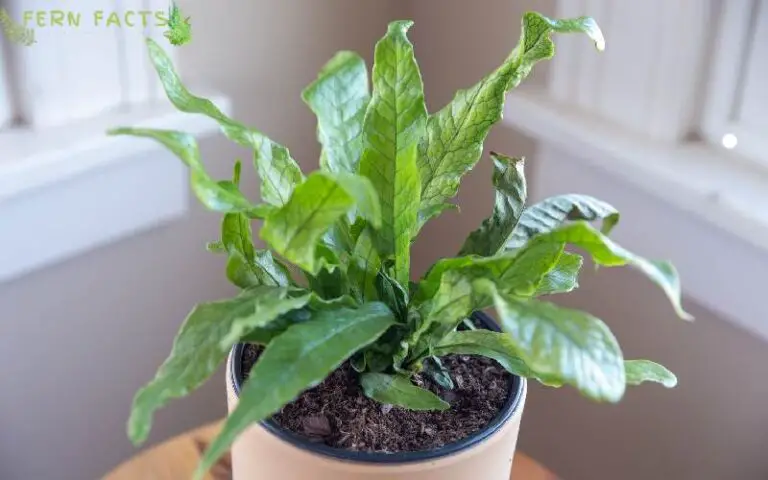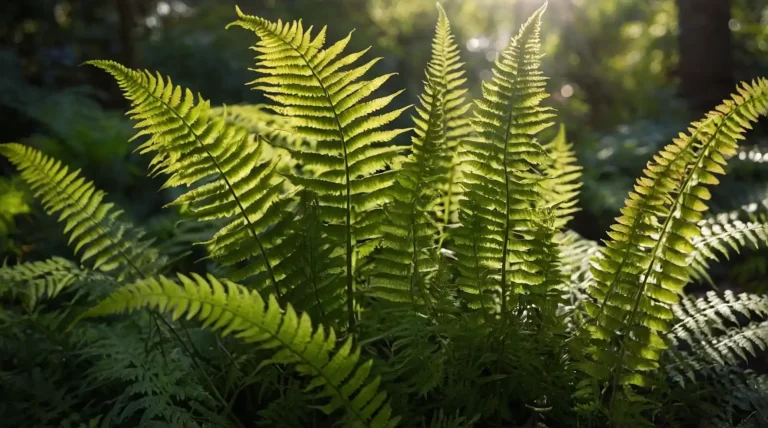Types of Asparagus Fern – All You Need to Know
Asparagus ferns are one of the prettiest ferns to decorate your home and residents. But do you know these ferns have different variations?
You can fill your garden with the different varieties of asparagus ferns with their bright green, lush foliage. Therefore, in this article, I’m going to provide 8 types of Asparagus Ferns along with their botanical names, sizes, USDA zones, Key features or characteristics.
Besides, I’ll give a brief idea about their other characteristics and adaptability so that you can have a clear idea about each indirect species of these asparagus ferns and identify them.
So let’s see those 8 varieties of asparagus ferns.
8 Different Types of Asparagus Fern
Although these Asparagus are not true species of ferns, still their fronds are one of them which is similar to other ferns.
Asparagus generally has three categories which are Sprenger, plumosa, and foxtail. Apart from these three, there are some subcategories of these ferns.
If you want to have a bushy, greenery garden then Asparagus would be the perfect choice for you. So here are some varieties of Asparagus with pictures, which you can inhabit at your house.
1. Sprenger Asparagus
- Botanic name: Asparagus densiflorus “Sprengeri”
- Average size: 3 ft
- Key characteristic: needle-like cluster (long)
- USDA Zone: 9 to 11
The Sprenger Asparagus ferns have long clusters which grow densely. It has bright green foliage which grows white flowers and green berries. Later these berries turn into a bright red color.
These ferns are also referred to as emerald ferns because of their bright green foliage. And so, these ferns are one of the most popular ferns because of their bright green foliage texture.
As these grow around 3 feet in height, you can plant these ferns indoors and outdoors. You can even plant these ferns in hanging baskets as well in your house.
But remember, If you grow these ferns outside, you can let them have morning sun exposure but try to shelter them during afternoon sunlight. Direct afternoon sunlight might harm these ferns.
2. Foxtail Asparagus
- Botanic name: Asparagus densiflorus ‘Meyeri’
- Average size: 2 ft
- Key characteristic: bushy fronds like foxtail leaves
- USDA Zone: 9 to 11
The Foxtail ferns grow in cluster bushy forms whose fronds resemble the tail of a fox, that’s why its name is Foxtail Ferns. These ferns are one of the most common ferns to spot in North America.
During their blooming time, these ferns grow small white flowers and red berries. These ferns’ Average height is up to 2 feet and wide is around 4 feet.
These ferns grow widely on the ground surface although you can plant these at your home as well. You can let these ferns have morning sun rays but try to protect them from afternoon sunlight because they might be sensitive to heavy sun exposure.
3. Plumosa Asparagus
- Botanic name: Asparagus setaceus
- Average size: around 10 to 20 feet
- Key characteristic: delicate, soft, and green bright fronds
- USDA Zone: 9 to 11
The plumosa ferns are also one of the delicate ferns that attract many plant lovers and gardeners.
They have soft bright green flattened foliage. If you touch them, you will be able to understand their softness through the touch.
However, if you have pets in your house it will be a little problematic for you to manage these ferns. Their ferns are soft and it’s easy to chew. So, your pet might chew their fronds.
Additionally, these ferns are very easy growing ferns and don’t need extra care and maintenance. However, these ferns are fond of indirect sunlight and gentle watering techniques like misting, and weekly watering.
Similarly, their soil should have a drainage system with rich nutrients.
These ferns can be grown aggressively as these are invasive plants. So you also need to prune these ferns otherwise it will be very difficult to manage these ferns.
4. Dwarf Asparagus

- Botanic name: Asparagus densiflorus ‘Nana’
- Average size: 15 inches (height)
- Key characteristic: compact soft feather-like fronds
- USDA Zone: 9 to 11
These types of Asparagus fern produce emerald green fronds with soft feathers-like emergence. But these ferns are comparatively small and compact to other varieties of ferns.
Due to their height and size, these ferns would be the best indoor plants to have.
5. Ming Asparagus
- Botanic name: Asparagus retro-fractus
- Average size: around 6 to 8 ft
- Key Characteristic: shrub needles like fronds, grow in a cluster
- USDA Zone: 9 to 11
These Ming ferns are another type of Asparagus ferns that grow in clusters and have shrub needles-like fronds. These ferns also have long woody leaves with zig-zag patterns.
The fern bases of the stems are thick and the color of slightly silver. The silver zig-zag patterns make these ferns more elegant to observe.
These ferns can grow up to 6 to 8 feet in height with USDA Zone 9 to 11. Usually, these ferns are native to South Africa and inhabited near river areas and sandy rocky areas.
Additionally, these plants will require bright indirect sunlight or filtered sunlight and also need sufficient water so that the soil will stay moist.
6. Climbing Asparagus Fern
- Botanic name: Asparagus scandens
- Average size: around 8 ft (2 meter)
- Key Characteristic: scrambling feathery leaves
- USDA Zone: 9 to 11
These climbing ferns have soft green feathery foliage and are also known as ground ferns. These ferns are native to South Africa. These ferns are fine, delicate, and also quite hardy.
These types of ferns are fond of shady habitats and moisture although they can tolerate drought and dryness. But too much dryness can harm these ferns.
During spring these ferns grow tiny white flowers and orangish red berries. If you want to grow these ferns outside of your house, you have to plant them under shady areas or shelter places.
These ferns can climb up any pillars, sticks, or wood. Nonetheless, if there is nothing there to climb up, they can form a thick feathery ground cover.
However, you can also plant these in pots and place them inside of your house as indoor plants. But you have to place them where they can get indirect sunlight which will help these ferns to thrive.
7. Wild Asparagus
- Botanic name: Asparagus acutifolius
- Average size: around 20 to 28 inches
- Key Characteristic: thorny needle-like fronds
- USDA Zone: 9 to 11
Wild Asparagus are other varieties of ferns that have thorny leaves or fronds. Their stems are more branched and also have feathery foliage.
Similarly, their leaves are like thorny needles and also have modified stems. Like all other ferns, these wild ferns also produce white bell-shaped flowers.
The flowers have greenish to yellowish color in the greenery foliage which makes the appearance even more charming.
It also produces small green berries through the late summer seasons after heavy storms. These wild ferns also need full to partial shade for blooming.
8. Compact Sprenger Asparagus Ferns
- Botanic name: Asparagus densiflorus ‘Sprengeri Compacta’
- Average size: 2 ft or 0.6 meter
- Key Characteristic: dense, bright green foliage
- USDA Zone: 9 to 11
These Compact Asparagus ferns are small and compact growth with bright green foliage. These ferns are the semi-evergreen ferns for outdoors throughout the year.
Their blooming time is spring and at that time they produce red berries. After you plant them in your house, try to maintain the regular moisture in their soil although they can tolerate mid-drought at certain periods.
If you live in a cold environment, then you can plant them in containers as indoor plants. But for your outdoor plants, need a minimum of 55°F temperatures to thrive and survive.
Final Thought
In the final observation, Asparagus is one of the most evergreen plants that attracts plant lovers. However, their unique and vibrant varieties have different characteristics and features.
And so, like all other ferns, these asparagus ferns also grow white flowers and red berries which gives a contrasting view with greenery foliage to admire.
In short, if you are a plant lover, you can buy these subspecies of Asparagus ferns and give a wild nature look around your other garden plants.

